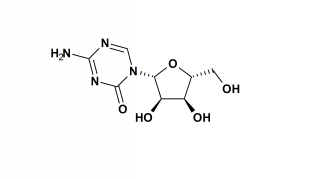Byline: J. Singh
www.medsafe.gov.nz
The World Health Organization (WHO) has popularised the approach that access to medicines relies on four integral factors: rational selection of medicines, affordable prices, sustainable financing of healthcare (including medicines) and reliable health and supply systems. An effective and transparent medicines regulatory system forms the basis for such an initiative. National medicine regulatory authority of any country approve the use of medicines in context of these principles, having considered evidence of the medicine's safety, quality and efficacy. The broader scope of "therapeutic products" has now increasingly come to mean not only medicines but allied products like nutraceuticals, health supplements, medical devices and most importantly, traditional herbal remedies. Not many nations have launched initiatives to inculcate these novel components into their medicine regulatory system.
New Zealand is a country that has acknowledged the need for addressing the issue of the use of herbal medicines and medical devices along with other regulatory measures. Medsafe (www.medsafe.gov.nz) is the New Zealand Medicines and Medical Devices Safety Authority which is responsible for the regulation of therapeutic products. The home page of the organization is unpretentious and consists of various navigable links. Distinctive well laid out sections deal with the needs of both health professionals and consumers. A drug bulletin, "Prescriber Update" that provides updated information regarding the status of and use of medicines is available on the health professionals' page. Recent issues have dealt with many contemporary topics including controversies surrounding the use of COX-2 inhibitors, counterfeit drugs and adverse drug reactions. The page also hosts Data Sheets of medicines which are searchable by name. Information on Clinical Trials and Good Clinical Research Guidelines are available in addition to Adverse Drug Reaction reporting, drug abuse and regulatory issues. Subsections on medical devices and unapproved medicines are the unique features of this section.
The section meant for consumers contains an archived and searchable database of articles published in Consumer Medicines Information. This publication is unique in the fact that it is sponsored and written by different pharmaceutical companies in accordance with the guidelines issued by Medsafe. Patient information leaflets on common concerns are also hosted on this link. The sections on safe use of medicines, consumer rights and reporting of side-effects, empower the consumer to be better informed and participate in treatment in a more responsible manner. Regulatory information is contained on another link which provides access to various legislations, databases, forms and guidelines. The COMET (Complementary Medicine Transition) Database is a web-based reporting and registration system for including novel herbal products. Constructed on similar lines, another database, WAND (Web Assisted Notification of Devices) keeps an account of new medical devices. The Hot Topics section provides updated information on the use of drugs and their labelled uses, it also provides cautionary warnings on the use of herbal, traditional and complementary remedies. A number of publications ranging from drug information, regulatory guidelines, good manufacturing practices and legislations can be downloaded from the website. These guides provide an insight into the working of this efficient and transparent regulatory system, which can be readily duplicated for use in any setting.
The website seeks to address various regulatory and other issues related to the use of medicines, complementary medicines, herbal products and medical devices. It succeeds in doing so in an eminently lucid manner. The contents are especially geared to address the needs of regulatory authorities, researchers, practitioners and those looking for ideas in order to apply web-based information to practice.
References
1. Issa JJ, Kantarjian HM, Kirkpatrick P. Azacitidine. Nat Rev 2005;4:275-6.
2. Leone G, Voso MT, Teofili L, Lubbert M Inhibitors of DNA methylation in the treatment of hematological malignancies and MDS. Clin Immunol 2003;109:89-102.
3. Jones PA, Taylor SM, Wilson VL Inhibition of DNA methylation by 5-azacytidine. Recent Results Cancer Res. 1983;84:202-11.
4. Glover AB, Leyland-Jones B. Biochemistry of azacitidine: A review. Cancer Treat Rep 1987;71:959-64.
5. Glover AB, Leyland-Jones BR, Chun HG, Davies B, Hoth DF. Azacitidine: 10 years later. Cancer Treat Rep 1987;71:737-46.
6. Cameron EE, Bachman KE, Myohanen S, Herman JG, Baylin SB. Synergy of demethylation and histone deacetylase inhibition in the re-expression of genes silenced in cancer. Nat Genet. 1999;21:103-7.
7. Narayan A, Ji W, Zhang XY, Marrogi A, Graff JR, Baylin SB, et al . Hypomethylation of pericentromeric DNA in breast adenocarcinomas. Int J Cancer. 1998;77:833-8.
8. Richardson BC, Liebling MR, Hudson JL. CD4+. Cells treated with DNA methylation inhibitors induce autologous B cell differentiation. Clin Immunol Immunopathol 1990;55:368-81.
9. Kaminskas E, Farrell AT, Wang Y, Sridhara R, Pazdur R. FDA Drug approval summary: Azacitidine (5-azacytidine, vidaza) for injectable suspension. The Oncologist 2005;10:176-82.
10. Santini V, Kantarjian HM, Issa JP. Changes in DNA methylation in neoplasia: Pathophysiology and therapeutic implications. Ann Intern Med 2001;3::573-86.
11. Silverman LR, Demakos EP, Peterson BL, Kornblith AB, Holland JC, Odchimar-Reissig R. Randomized controlled trial of azacitidine in patients with the myelodysplastic syndrome: a study of the cancer and leukemia group Br J Clin Oncol 2002;20:2429-40.
12. Silverman LR, Holland JF, Demakos EP. Azacitidine in myelodysplastic syndrome. CALGB studies 8921and 8921. Ann Hematol 1994;68:12.
13. Silverman LR, Holland JF, ELLISON RR. Low dose continous infusion azacitidine is an effective thearapy for patients with myelodysplastic syndrome, a study of cancer and leukemia group. Br J Cancer Res Clin Oncol 1990;116:816.
COPYRIGHT 2005 Medknow Publications
COPYRIGHT 2005 Gale Group



